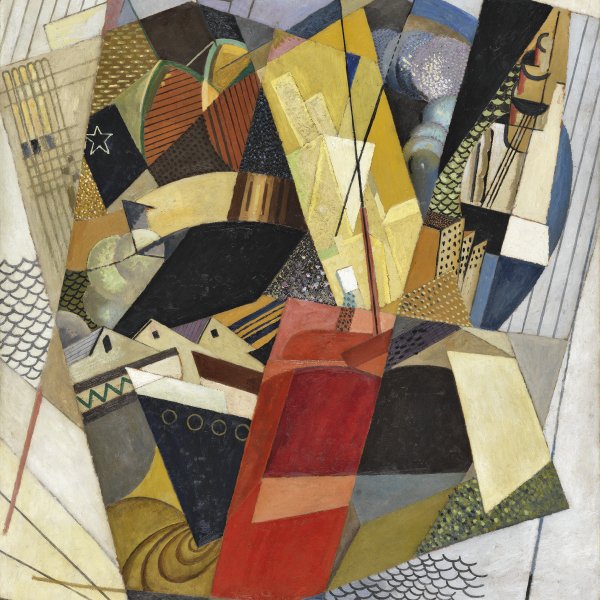Albert Gleizes
Paris, 1881-Avignon, 1953
Albert Gleizes was involved with the Cubist movement in Paris of the 1910s and, together with Jean Metzinger, helped disseminate its theories by publishing the book Du Cubisme in 1912, which was read, among others, by the group Puteaux to which the Duchamp brothers belonged. Gleizes showed an early interest in painting and worked in the family furniture and interior design business. Backed by his father, in 1902 he exhibited at the Société Nationale des Beaux-Arts and in 1906 was one of the founders of the Abbaye de Créteil intellectual circle which remained active until 1908.
Gleizes’s first works, which were Impressionist in style, denoted an evident preoccupation with social themes, a characteristic that was present until the end of the 1900s. Around 1910 a growing interest in structure and a clear tendency towards formal simplification steered him towards Cubism, which also attracted him for its aim of linking artists of all nationalities and breaking away from bourgeois canons. During this period he befriended Jean Metzinger and Robert Delaunay and took part in some of the group’s most important exhibitions, such as the Salon de la Section d’Or in 1912.
Shortly after the outbreak of the First World War, he married and moved first to New York and later to Barcelona and Bermuda. Thenceforward he devoted much of his time to writing about his aesthetic ideas and delivering numerous lectures. While in New York he came into contact with Francis Picabia and Marcel Duchamp and was a privileged witness to the emergence of Dadaism in the United States.
On returning to France, Gleizes was plunged into a deep personal crisis and was greatly disappointed with the direction in which painting was heading during the interwar period, while the hopes he had pinned on the Russian Revolution were dashed. He settled in Serrières, south of Lyon, in 1923, and in 1927 established a colony of artists there, Moly-Sabata, which aimed to be a stronghold of salvation within a society that he considered doomed to collapse. Gleizes regarded the social principles of early Christianity as a way out and, when he returned to Catholicism in 1941, his art turned towards religious themes, drawing inspiration from the primitive Christian and medieval world.
Gleizes’s first works, which were Impressionist in style, denoted an evident preoccupation with social themes, a characteristic that was present until the end of the 1900s. Around 1910 a growing interest in structure and a clear tendency towards formal simplification steered him towards Cubism, which also attracted him for its aim of linking artists of all nationalities and breaking away from bourgeois canons. During this period he befriended Jean Metzinger and Robert Delaunay and took part in some of the group’s most important exhibitions, such as the Salon de la Section d’Or in 1912.
Shortly after the outbreak of the First World War, he married and moved first to New York and later to Barcelona and Bermuda. Thenceforward he devoted much of his time to writing about his aesthetic ideas and delivering numerous lectures. While in New York he came into contact with Francis Picabia and Marcel Duchamp and was a privileged witness to the emergence of Dadaism in the United States.
On returning to France, Gleizes was plunged into a deep personal crisis and was greatly disappointed with the direction in which painting was heading during the interwar period, while the hopes he had pinned on the Russian Revolution were dashed. He settled in Serrières, south of Lyon, in 1923, and in 1927 established a colony of artists there, Moly-Sabata, which aimed to be a stronghold of salvation within a society that he considered doomed to collapse. Gleizes regarded the social principles of early Christianity as a way out and, when he returned to Catholicism in 1941, his art turned towards religious themes, drawing inspiration from the primitive Christian and medieval world.





